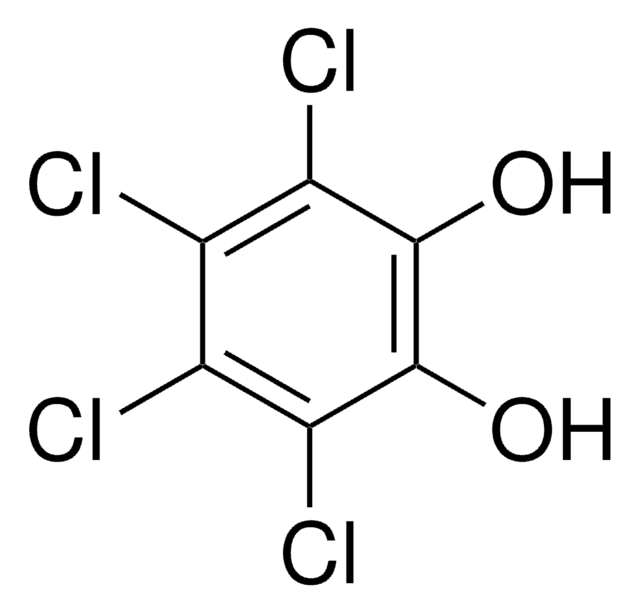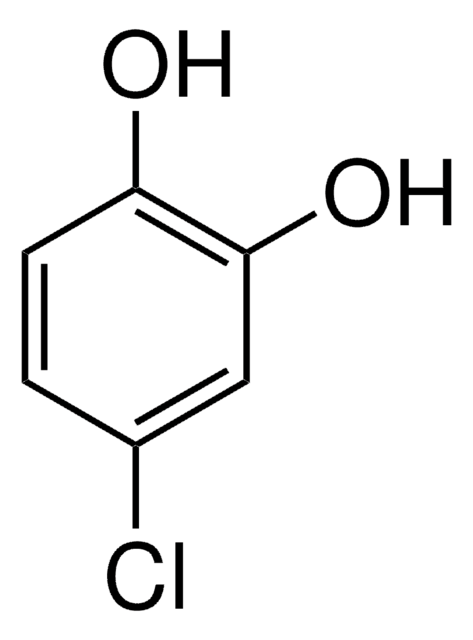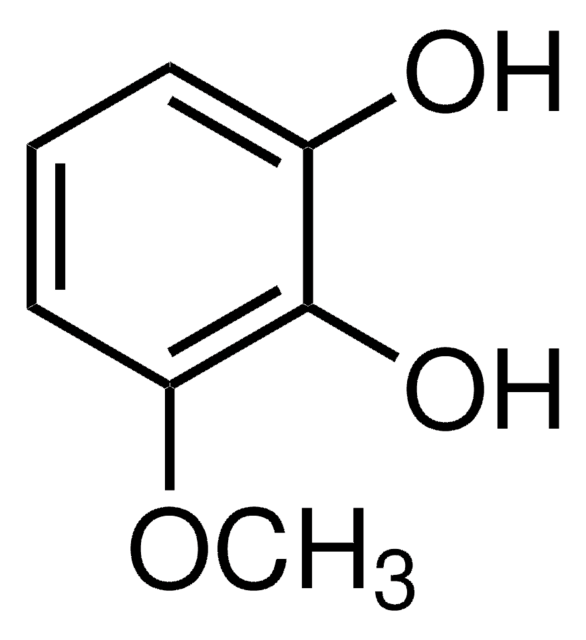547093
4,5-Dichlorocatechol
97%
Iniciar sesiónpara Ver la Fijación de precios por contrato y de la organización
About This Item
Fórmula lineal:
Cl2C6H2(OH)2
Número de CAS:
Peso molecular:
179.00
EC Number:
MDL number:
UNSPSC Code:
12352100
PubChem Substance ID:
NACRES:
NA.22
Productos recomendados
assay
97%
form
solid
mp
110-115 °C (lit.)
SMILES string
Oc1cc(Cl)c(Cl)cc1O
InChI
1S/C6H4Cl2O2/c7-3-1-5(9)6(10)2-4(3)8/h1-2,9-10H
InChI key
ACCHWUWBKYGKNM-UHFFFAOYSA-N
Categorías relacionadas
Certificados de análisis (COA)
Busque Certificados de análisis (COA) introduciendo el número de lote del producto. Los números de lote se encuentran en la etiqueta del producto después de las palabras «Lot» o «Batch»
¿Ya tiene este producto?
Encuentre la documentación para los productos que ha comprado recientemente en la Biblioteca de documentos.
Los clientes también vieron
Mallory L Palatucci et al.
Journal of hazardous materials, 378, 120717-120717 (2019-06-17)
Dichloronitrobenzenes (DCNB) are intermediates in the production of dichloroanilines, which are key feedstocks for synthesis of diuron and other herbicides. Although DCNB is a major contaminant at certain chemical manufacturing sites, aerobic DCNB biodegradation is poorly understood and such sites
Yi-Zhou Gao et al.
Environmental microbiology, 23(2), 1053-1065 (2020-10-27)
The chemical synthesis intermediate 3,4-dichloronitrobenzene (3,4-DCNB) is an environmental pollutant. Diaphorobacter sp. strain JS3050 utilizes 3,4-DCNB as a sole source of carbon, nitrogen and energy. However, the molecular determinants of its catabolism are poorly understood. Here, the complete genome of
Chiara Micalella et al.
Biotechnology and applied biochemistry, 61(3), 297-303 (2014-02-28)
Enzymes entrapped in wet, nanoporous silica gel have great potential as bioreactors for bioremediation because of their improved thermal, chemical, and mechanical stability with respect to enzymes in solution. The B isozyme of catechol 1,2 dioxygenase from Acinetobacter radioresistens and
Luis E Sojo et al.
Rapid communications in mass spectrometry : RCM, 28(20), 2181-2190 (2014-09-03)
Catechols are an important class of analytes occurring in many natural and synthetic products. Electrospray ionization in negative mode is the preferred way of ion generation for these compounds; however, studies in positive ion mode can reveal their potential for
Nuestro equipo de científicos tiene experiencia en todas las áreas de investigación: Ciencias de la vida, Ciencia de los materiales, Síntesis química, Cromatografía, Analítica y muchas otras.
Póngase en contacto con el Servicio técnico









